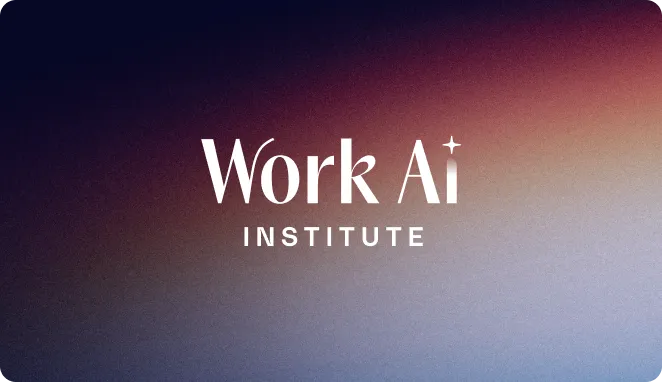- Artificial intelligence (AI) is transforming life sciences by enabling research, clinical, and regulatory teams to efficiently access and act on scattered, complex information—accelerating discovery, improving compliance, and reducing redundant work.
- Glean’s Work AI platform offers practical, permission-aware AI integration with core industry tools, centralizing knowledge and supporting strict regulatory requirements without requiring data migration or changes in workflow.
- The real value of AI in life sciences lies not in replacing experts, but in unlocking organizational expertise, streamlining everyday operations, and keeping teams audit-ready, compliant, and focused on core scientific innovation.
Artificial intelligence is reshaping the life sciences industry — not through hype or distant promises, but by solving real problems that slow innovation, increase risk, and inflate costs. From accelerating discovery to enabling faster, more confident regulatory submissions, AI is helping teams spend less time searching for answers and more time making breakthroughs.
Life sciences organizations are under pressure. Data volumes are growing. Regulations are evolving. And critical knowledge is scattered across dozens of disconnected systems. Moving a single project forward can require combing through hundreds of pages of protocols, reports, and documentation.
That’s where AI has become indispensable for research, clinical, and regulatory teams.
What is AI in life sciences?
AI in life sciences refers to technologies like large language models (LLMs), machine learning, and natural language understanding that help teams access, analyze, and act on complex biomedical and regulatory information.
Unlike traditional automation, which follows structured workflows and predefined rules, AI can interpret unstructured content and respond to ad hoc requests — even those that require scientific context or regulatory nuance.
AI isn’t replacing scientists or compliance teams. It’s helping them work more efficiently by doing what systems and static dashboards can’t: finding the right version of an SOP, retrieving experiment results, summarizing protocols, or locating supporting documentation buried across disconnected tools. The result is faster decision-making, better compliance readiness, and stronger use of institutional knowledge.
AI in research and discovery
Accelerating early-stage discovery
Scientific knowledge is often scattered across electronic lab notebooks, SharePoint drives, publication databases, and internal reports. AI helps researchers search across all of these systems in plain language — making it easier to find prior work, avoid redundancy, and uncover insights from past studies.
For example, a scientist exploring a new compound might ask, “Have we done any research on GXA-91?” and receive a summarized view of related internal experiments, formulation documents, and published literature. That context can reduce duplicative work and accelerate hypothesis generation.
Reusing validated methods and protocols
Planning a new experiment doesn’t always start from scratch, but it can feel that way when documentation is hard to find. AI helps teams resurface validated protocols, historical data, and the rationale behind past decisions. This makes it easier to build on proven methods, reduce trial-and-error, and plan smarter using what the organization already knows.
AI in clinical development
Supporting trial coordination and site onboarding
Clinical teams often need to review eligibility criteria, deviation logs, and training materials, but that information is spread across systems like SharePoint and Box. AI helps by retrieving and summarizing key documents with full source context, so site coordinators can get up to speed quickly and with confidence.
A trial manager might ask, “What’s the I/E criteria for Protocol CT-123B, and how many deviations have been logged?” and get an accurate, up-to-date answer with links to supporting records, reports, and procedures.
Improving compliance and data consistency
During audits or inspections, it’s critical to surface the right SOPs, change control logs, and training history without delay. AI reduces the time teams spend tracking down these materials by enabling permission-aware search across systems, with version control and traceability built in. That means faster answers, cleaner audit trails, and fewer surprises when regulatory deadlines hit.
AI in regulatory and quality management
Enabling faster submission preparation
Regulatory submissions can exceed 100,000 pages, pulling together documentation from dozens of sources. Teams must locate CMC records, prior correspondence, labeling files, and other supporting materials — often while juggling multiple systems and tight timelines.
AI simplifies that process. Instead of relying on institutional memory or manual search, regulatory affairs teams can ask targeted questions and retrieve validated, signed documents with full source context. Whether compiling an IND, NDA, or responding to a Health Authority query, they can move faster and stay confident in the accuracy of every file.
Maintaining audit readiness
For quality teams, staying inspection-ready means being able to produce the right SOPs, batch records, or CAPA documentation without delay. But as standards evolve — from FDA 21 CFR Part 11 to EMA IDMP — and documentation grows more complex, preparation becomes more burdensome.
AI helps manage that complexity. It centralizes access to version-controlled records and organizes submission artifacts so they’re easy to locate, verify, and share. That means less time spent preparing for audits and more time ensuring products meet the highest quality standards.
Why Glean for life sciences
Glean’s Work AI platform is built to meet the needs of regulated industries like life sciences. Unlike generic AI copilots, Glean connects directly to the systems your teams already rely on — including Benchling, SharePoint, Box, Jira, and more — to index knowledge with full context, permission controls, and audit traceability.
Instant access to enterprise knowledge
Whether you’re a scientist searching for assay results, a QA lead retrieving SOPs, or a trial manager onboarding a new site, Glean delivers fast, contextual answers from across your tools. You can ask questions in natural language and get a direct answer, along with the exact file, author, timestamp, and location.
When timelines tighten or an unannounced audit arrives, Glean helps teams stay inspection-ready. It surfaces the right version of the right document — so teams can respond confidently and avoid delays.
Designed for compliance and trust
Glean was built for environments with strict regulatory oversight. It:
- Respects user permissions and role-based access controls
- Maintains a traceable audit trail for every query
- Enforces version awareness to ensure source-level accuracy
These safeguards help organizations meet GxP requirements without creating operational overhead.
Built for real systems and scale
Glean integrates with more than 100 tools out of the box — including Microsoft 365, Google Workspace, Benchling, and Box — so teams don’t need to migrate data or change how they work. It indexes knowledge where it already lives and delivers secure, compliant answers directly in the flow of work.
Getting started with AI in life sciences
You don’t need to overhaul your workflows to benefit from AI. Some of the biggest time savings and risk reductions come from applying AI to everyday tasks — like finding a protocol, preparing a regulatory response, or locating the right batch release document.
To get started:
- Look for teams slowed down by search fatigue — such as regulatory, quality, or R&D
- Prioritize repeatable, documentation-heavy use cases where accuracy and compliance matter
- Choose a platform that integrates with your systems, enforces security and permissions, and delivers answers quickly
Bringing AI to the frontlines of life sciences work
The challenge in life sciences isn’t a lack of information. It’s accessing the right information at the right time — without slowing down research or putting compliance at risk. That’s where AI delivers real value. It doesn’t replace expertise. It unlocks it.
With the right foundation, AI helps teams move faster, stay audit-ready, and focus on what they do best. Whether they’re developing new therapies, running clinical trials, or managing quality at scale, AI keeps work moving.
It doesn’t need to be disruptive to make a difference. It just needs to work where your teams already do. That’s what Glean makes possible.
Ready to see it in action? Get a demo to see how Glean supports your teams across research, regulatory, and clinical operations. Or download the healthcare whitepaper to learn more about how Glean enables secure, AI-powered transformation in highly regulated environments.









